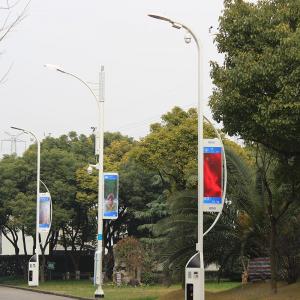Solar City Inverter
Solar City Inverter Related Searches
100w Solar Panel With Inverter Best Solar Panel Inverter 5000 Series Cast Aluminum Plate Portable Solar Panel Inverter First Solar Series 6 Module 12 Volt Solar Panel Inverter Plastic Solar Lanterns Buy Solar Panel Inverter Solar Panel Inverter Cost Solar Panel Without InverterHot Searches
Type Of Inverter For Solar Types Of Inverter For Solar Used Solar Inverter For Sale Inverter Size For Solar System Solar Edge Inverter For Sale 5kw Solar Inverter For Sale Solar Inverter For Sale Solar Inverter For Battery Solar Inverter For Split Ac Solar Inverter For Laptop Solar Inverter For Fridge Solar With Inverter Price Solar Inverter With 2 Battery Solar Inverter Price In China Best Solar Inverter In China Solar Inverter Price In Dubai Solar Inverter Price In Uae Solar Inverter Price In Kenya Solar Inverter Price In Kerala Solar Hot Water Collectors For SaleSolar City Inverter Supplier & Manufacturer from China
Okorder.com is a professional Solar City Inverter supplier & manufacturer, offers integrated one-stop services including real-time quoting and online cargo tracking. We are funded by CNBM Group, a Fortune 500 enterprise and the largest Solar City Inverter firm in China.Hot Products
FAQ
- One advantage of using a transformerless solar inverter is its higher efficiency. By eliminating the need for a bulky and heavy transformer, the inverter can convert the DC power from the solar panels to AC power more efficiently. This results in less energy loss during the conversion process, leading to higher overall system efficiency and increased energy generation. Additionally, transformerless inverters tend to be smaller and lighter, making them easier to install and maintain.
- The role of a power factor correction circuit in a solar inverter is to optimize the power factor of the electrical system. It ensures that the energy being generated by the solar panels is efficiently utilized by balancing the reactive power and reducing harmonic distortions. This helps in improving the overall system efficiency, reducing energy losses, and complying with grid regulations.
- Yes, there are limitations on the angle of the solar panels when using a solar inverter. The angle at which solar panels are installed can affect their efficiency and overall performance. Ideally, solar panels should be installed at an angle that allows them to receive maximum sunlight throughout the day. Most solar panels are designed to work optimally when installed at an angle that is equal to the latitude of the location. This angle allows the panels to capture the most sunlight during peak hours. However, this is not a strict rule and variations are possible depending on the specific location and climate conditions. If solar panels are installed at an angle that is too steep or too shallow, it can result in reduced energy production. Steep angles may cause the panels to lose sunlight during certain times of the day, while shallow angles may not allow for optimal sunlight absorption. Additionally, extreme angles can also increase the risk of damage from wind or other weather conditions. It is important to note that modern solar inverters often come with advanced tracking and monitoring technologies that can adapt to different panel angles and orientations. These features can optimize energy production by adjusting the inverter settings based on the real-time performance of the panels. Overall, while there are limitations on the angle of the solar panels, it is crucial to ensure that they are installed in a way that maximizes their exposure to sunlight throughout the day to achieve the highest energy production possible.
- A solar inverter handles power factor correction by using advanced control algorithms and circuitry to actively manage and adjust the power factor of the electrical output. It does this by continuously monitoring the load and adjusting the phase angle and voltage to ensure that the power factor remains close to unity (1.0). This helps optimize the efficiency of the solar system and ensures that the power being generated is in sync with the grid requirements.
- The role of ground fault protection in a solar inverter is to safeguard against electrical faults that occur when an unintended ground connection is made in the system. It detects any leakage of current to the ground and quickly disconnects the circuit to prevent the risk of electric shock or damage to the equipment. Ground fault protection ensures the safety and reliability of the solar inverter, as well as the overall solar power system.
- The role of a power monitoring feature in a solar inverter is to track and measure the amount of power generated by the solar panels. It provides real-time data on the energy production, allowing users to monitor the system's performance, identify any issues or inefficiencies, and optimize the overall energy output. This feature is crucial for ensuring the effective and efficient operation of a solar power system.
- The role of a solar inverter in a battery storage system is to convert the direct current (DC) electricity produced by the solar panels into alternating current (AC) electricity that can be used to power household appliances and charge the battery. It also manages the flow of electricity between the solar panels, battery, and the grid, ensuring optimal utilization of the stored energy and facilitating grid interaction when necessary.
- MPPT (Maximum Power Point Tracking) is a technique used in solar inverters to enhance their performance and maximize the energy output of the solar panels. Solar panels generate direct current (DC) electricity, which needs to be converted into alternating current (AC) to be used by household appliances or fed back to the grid. However, the amount of power generated by solar panels varies depending on factors like sunlight intensity, temperature, shading, and panel orientation. MPPT algorithms enable solar inverters to continuously track and adjust the operating point of the solar panels to extract the maximum power available. By continuously monitoring the voltage and current output of the solar panels, the MPPT controller determines the optimal operating voltage and current that will yield the highest power output. This optimization process is crucial because solar panels have a specific voltage and current combination at which their power output is maximized, known as the maximum power point (MPP). By operating the solar panels at their MPP, MPPT significantly improves the overall efficiency and performance of the solar inverter. With MPPT, solar inverters can adapt to changing environmental conditions and extract the maximum available power from the solar panels. This allows for increased energy production, reducing the reliance on grid electricity and maximizing the return on investment in solar installations. In summary, MPPT improves the performance of a solar inverter by optimizing the operating point of the solar panels to extract the maximum power available. This leads to increased energy production, improved efficiency, and better utilization of solar energy resources.














































